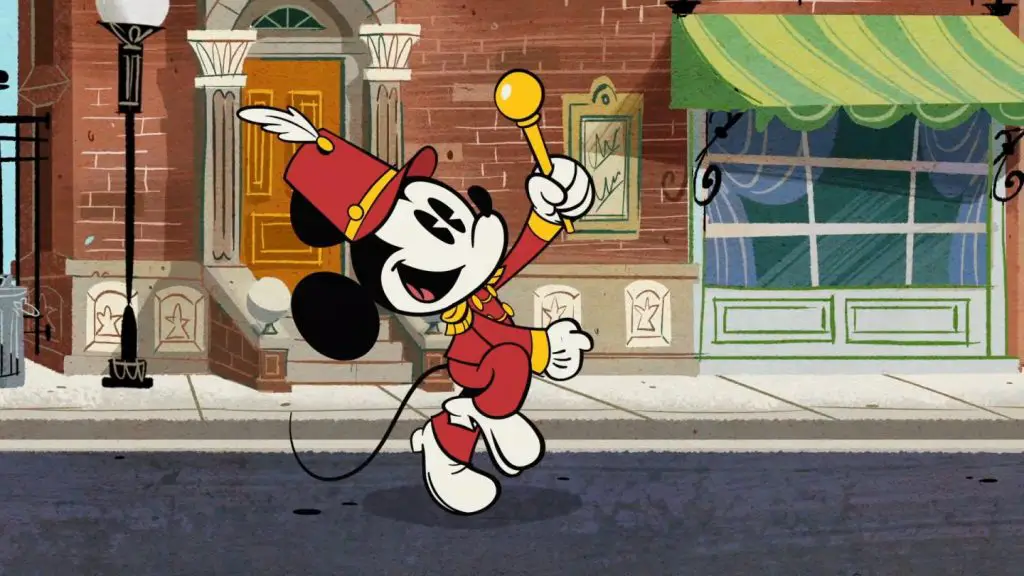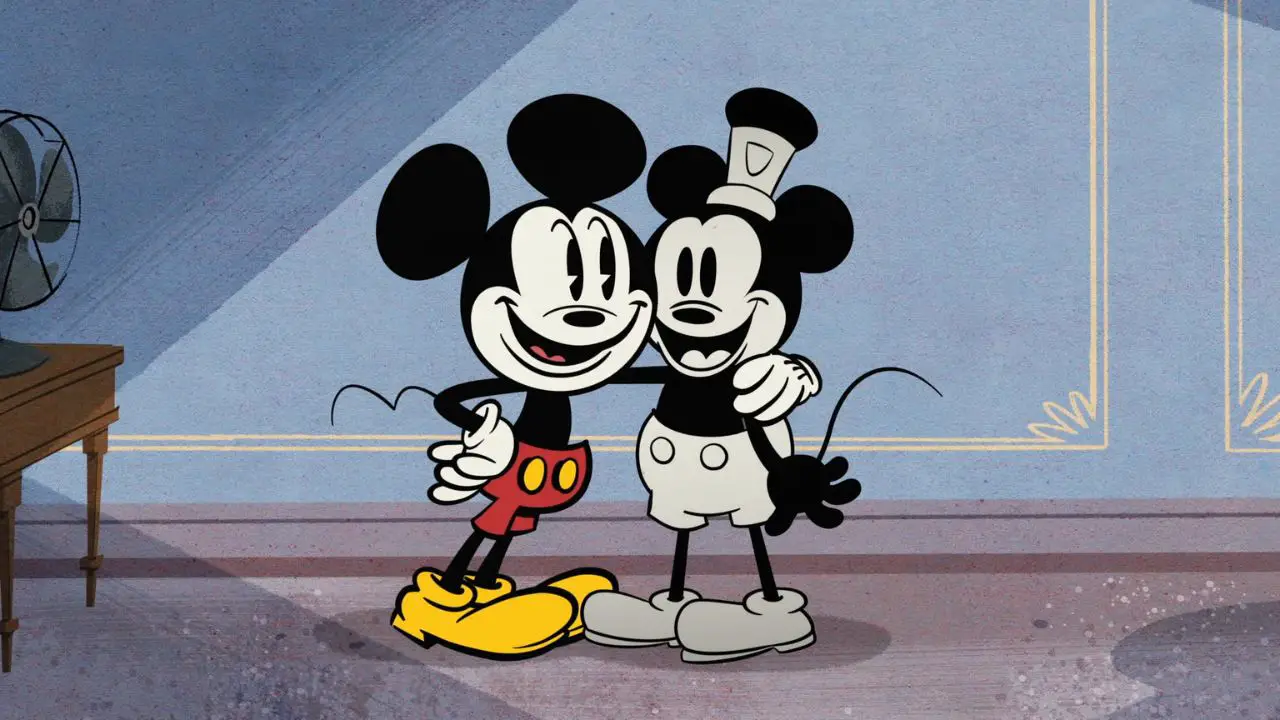Mickey Mouse has lived many lives over his nearly 100 years. He’s been a sorcerer, composer of silly symphonies, and cultural icon. However, in “Steamboat Silly”—the final short of The Wonderful World of Mickey Mouse—the most famous mouse in the world returns to his roots.
The short—now streaming on Disney+—starts harmlessly enough. Mickey and his friends Donald, Daisy, Goofy, and Minnie sit down to enjoy some of Mickey’s home movies. That includes the one that started it all: 1928’s Steamboat Willie. However, soon Mickey finds himself overrun by hundreds of his monochrome character from the original short, resulting in a madcap adventure.
Paul Rudish—the executive producer and supervising director of The Wonderful World of Mickey Mouse—pointed out that a madcap Mickey is vital to this final short, and to the history of the character himself.
“Our goal was to bring him back to the new audiences,” Rudish said. He added that the short’s silly nature harkens back to the original Mickey Mouse cartoons of the ’20s and ’30s thanks to their surrealism, physical comedy, and pantomime acting.
The Wonderful World of Mickey Mouse—which started in 2013 as simply Mickey Mouse shorts—updated Mickey for a new generation using some of the character’s initial rough edges. He’s still the lovable company mascot that he’s been for decades, but now with a little extra spice as the zany scamp he was from the start.
“I wanted to return to that flavor of Mickey and that vibe, but not replicate them,” Rudish said. “We didn’t want to go, ‘Look, here’s a 1930s cartoon.’ We wanted to take the sensibilities of those things but then put that through the lens of a team of modern artists.”

“Steamboat Silly” balances the past and present of Mickey while also maintaining the comedy—and sometimes even avant-garde essence—of Rudish’s shorts. For example, The Wonderful World of Mickey Mousecrew not only drew inspiration from the early days of Mickey in terms of look and feel for “Steamboat Silly,” but also in terms of its sound. This included a technique from the 1920s in which the tempo of the short’s music and action syncs up—a term that is still known as “Mickey Mousing” in Hollywood.
“There’s a portion in the middle, a very action-packed set piece that takes up maybe the middle third of the cartoon, which in particular is at a very, very high tempo, which was used a lot in cartoons in the ’20s and ’30s,” said Christopher Willis, the shorts’ composer. Willis mentioned that a lot of the cartoons from the early days of animation took popular songs and sped them up. He tried to replicate that for this final short.
“I wanted a tempo so high that I wasn’t sure at first if the band would be able to play that quickly,” he said.
“Steamboat Silly” is not just a celebration of Mickey, however. It’s a celebration of Disney as the company commemorates its 100th anniversary. The short is chock full of Disney easter eggs from 1929’s The Skeleton Dance, 1941’s Dumbo, and 1955’s The Mickey Mouse Club.

After more than 120 episodes, the Mickey Mouse shorts are coming to an end, but its impact is undeniable. The shorts have won multiple Emmy® and Annie Awards, been screened at the Venice Film Festival, and led to Mickey & Minnie’s Runaway Railway at Disney’s Hollywood Studios in Florida and Disneyland Park in California—Mickey’s first Disney Parks ride-through attraction.
But Mickey has been beloved ever since he stepped foot on that steamboat in 1928. What made this latest version so popular?
“Our Mickey is a bit flawed,” Rudish said. “I think people responded to that. They root for the cheerful optimist, but it’s not always an easy road.”
Also, Mickey still represents “the ongoing message of if you’ve got big dreams and you really try hard, you can make them come true,” according to Rudish.
“Mickey has always been an icon of that idea,” he said. “It’s inspirational.”






